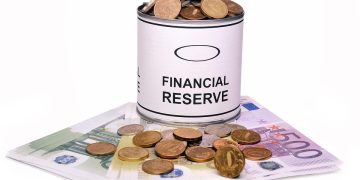Mastering the Art of Tax Efficiency: Strategies for Maximizing Your Returns
When it comes to investing, one of the key factors that can significantly impact your returns is tax efficiency. By implementing tax-efficient strategies, you can minimize the amount of taxes you owe and maximize your investment returns. In this article, we will discuss various strategies that can help you master the art of tax efficiency and achieve your financial goals.
Understanding Tax Efficiency
Before diving into specific strategies, it’s important to understand what tax efficiency means. Tax efficiency refers to the ability to minimize the tax impact on your investment returns. By structuring your investments in a tax-efficient manner, you can reduce the amount of taxes you owe and keep more of your money working for you.
There are several factors that can affect the tax efficiency of your investments, including the type of account you use, the types of investments you hold, and how you manage your portfolio. By being strategic in these areas, you can improve your after-tax returns and achieve better overall performance.
Choosing the Right Accounts
One of the first steps in mastering tax efficiency is choosing the right accounts to hold your investments. Different types of accounts have different tax implications, so it’s important to understand how each one works.
For example, retirement accounts like 401(k)s and IRAs offer tax advantages such as tax-deferred growth or tax-free withdrawals in retirement. By contributing to these accounts, you can reduce your taxable income and potentially lower your tax bill. Additionally, capital gains and dividends earned within these accounts are not subject to annual taxes, allowing your investments to grow tax-free.
On the other hand, taxable brokerage accounts are subject to annual taxes on capital gains, dividends, and interest income. While these accounts offer more flexibility in terms of access to your money, they can also result in higher tax liabilities. To minimize taxes in taxable accounts, consider holding tax-efficient investments such as index funds or ETFs, which typically have lower turnover and generate fewer capital gains.
Asset Location Strategies
Another important aspect of tax efficiency is asset location, which involves placing investments in the most tax-efficient account based on their tax characteristics. For example, tax-efficient investments like stocks and index funds are better suited for taxable accounts, while tax-inefficient investments like bonds and actively managed funds are more appropriate for tax-advantaged accounts.
By strategically locating your assets, you can minimize the tax impact on your overall portfolio and improve your after-tax returns. This can involve rebalancing your portfolio periodically to maintain the desired asset allocation while maximizing tax efficiency.
Harvesting Tax Losses
Tax-loss harvesting is a strategy that involves selling investments at a loss to offset capital gains and reduce your tax liability. By selling losing investments, you can realize a tax deduction that can be used to offset gains in other parts of your portfolio. Additionally, you can use excess losses to reduce your taxable income by up to $3,000 per year, with any remaining losses carried forward to future years.
When implementing tax-loss harvesting, it’s important to be mindful of wash sale rules, which prevent you from repurchasing the same or substantially identical investment within 30 days of selling it for a loss. By carefully managing your trades and selecting replacement investments that maintain your desired asset allocation, you can effectively reduce your tax bill and improve your after-tax returns.
Minimizing Investment Costs
Another key factor in tax efficiency is minimizing investment costs, which can eat into your returns and increase your tax burden. By choosing low-cost investments such as index funds and ETFs, you can reduce the amount of taxes you owe and keep more of your money working for you.
Additionally, consider the impact of fees on your investment performance, including expense ratios, management fees, and trading costs. By selecting investments with low fees and avoiding unnecessary expenses, you can improve your after-tax returns and achieve better overall performance.
Rebalancing and Diversification
Rebalancing your portfolio periodically is another important aspect of tax efficiency. By adjusting your asset allocation to maintain your desired risk level, you can minimize the tax impact of your investments and improve your after-tax returns. Additionally, diversifying your portfolio across different asset classes can help reduce volatility and improve tax efficiency.
When rebalancing your portfolio, consider using new contributions or withdrawals to adjust your asset allocation, rather than selling investments and incurring capital gains taxes. By strategically managing your portfolio and staying disciplined in your investment approach, you can achieve better overall performance and maximize your after-tax returns.
Conclusion
Mastering the art of tax efficiency is essential for maximizing your investment returns and achieving your financial goals. By choosing the right accounts, strategically locating your assets, harvesting tax losses, minimizing investment costs, and rebalancing and diversifying your portfolio, you can improve your after-tax returns and build wealth over time.
Remember that tax efficiency is a continuous process that requires ongoing monitoring and adjustments as your financial situation changes. By staying informed and proactive in managing your investments, you can optimize your tax strategy and achieve better overall performance.
Implementing these tax-efficient strategies can help you navigate the complexities of the tax code and maximize your after-tax returns. By being strategic in your approach and seeking professional advice when needed, you can achieve your financial goals and build wealth over time.


























































